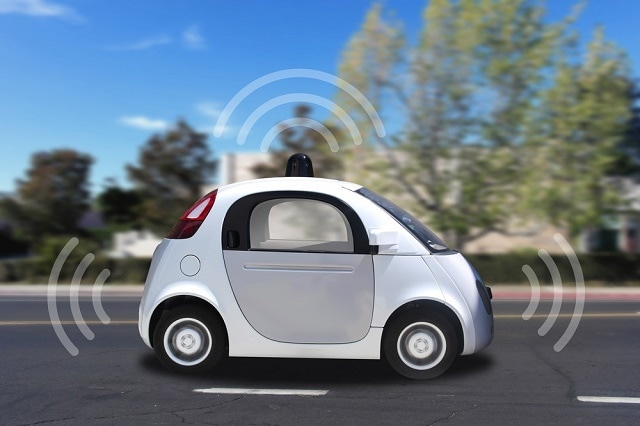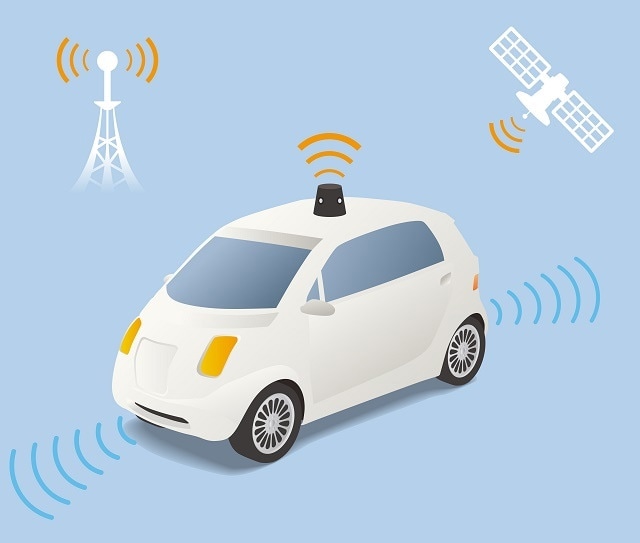
Image Credit: Martial Red | Shutterstock.com
When it comes to “seeing” the road, driverless cars currently in development are based on one of two systems: LiDAR (Light Detection And Ranging) and optical camera sensors.
A driverless car’s sensor system must be able to detect the road, obstacles like fallen trees and construction sites, other vehicles, pedestrians and cyclists, finally it must be able to sense the speed and direction of any moving objects.
Google’s LiDAR basis
While Google’s self-driving car does have a camera system, it primarily relies on LiDAR to sense the world around it. The LiDAR system detects objects by firing out a laser and waiting for a reflection to come back. The reflection is measured to determine the distance between the object and the car.
The Velodyne 64-beam laser Google’s car uses is accurate up to 100 feet, can rotate 360 degrees and is capable of taking as many as 1.3 million readings per second.
Google’s LIDAR is good for producing a detailed map of the car’s environment, but it is not well-suited to track the speed of other cars in real time. To do that, the Google car uses radar mounted on its front and back bumpers, technology already used in vehicles to warn of an imminent impact or vehicle located in the driver's "blind spot".
The Google car uses a radar to constantly regulate the throttle and brakes - essentially an adaptable cruise control that considers the movement of nearby cars.
Some reports have speculated that Google has also been testing a sonar system in some of its cars. While radar functions up to around 650 feet, sonar is only suitable for up to 20 feet.
They both have a slender field of view, so the car will register a dangerous situation if a vehicle traverses the radar and sonar beams. This signal might be used to swerve, brake or set the seatbelts for impact.

Image Credit: Chombosan | Shutterstock.com
Camera sensors
While LiDAR is a very effective sensor system for driverless cars, it’s also very expensive. One LiDAR sensor can cost as much as $80,000.
Telsa’s founder Elon Musk has been a vocal opponent of using LiDAR in driverless cars, calling it unnecessary.
I don’t think you need LIDAR. I think you can do this all with passive optical and then with maybe one forward RADAR.
Elon Musk, Founder oF Telsa
The self-driving car Telsa has in development, as well as several others, uses state-of-the-art cameras to see the road.
Developed by the company Mobileye, the camera used by the Tesla car is mounted on the front-facing side of the rearview mirror. Software allows the camera to gage distances to other vehicles, read signs, and detect pedestrians.
Like Google’s car, the Tesla car also has additional systems to backup its primary sensor system. A dozen ultrasonic sensors provide a 360-degree view around the vehicle, and a RADAR system helps the car’s Autopilot system to make decisions.
Observers have said that Tesla’s car could ultimately include a LiDAR system, and a recently unveiled LiDAR sensor could make that happen.
Unveiled by Ford as a part of its driverless car program, the Hybrid Ultra Puck LiDAR sensor – also made by Velodyne – is reported to cost less than $500 per unit. Resembling a very fat hockey puck, the sensor detects objects at twice the distance of Google’s current system.
References and Further Reading
Disclaimer: The views expressed here are those of the author expressed in their private capacity and do not necessarily represent the views of AZoM.com Limited T/A AZoNetwork the owner and operator of this website. This disclaimer forms part of the Terms and conditions of use of this website.